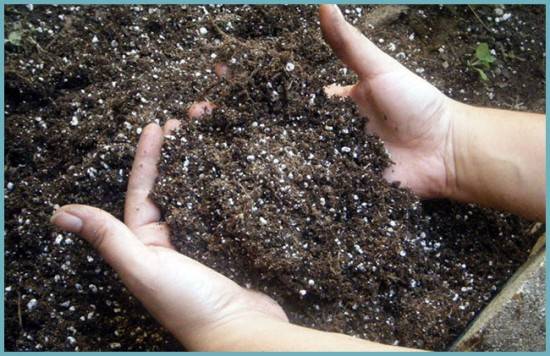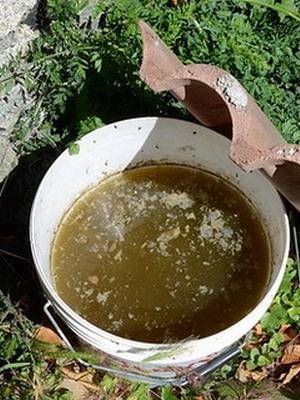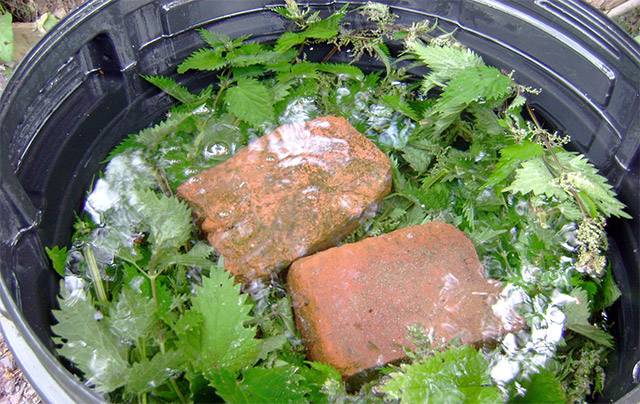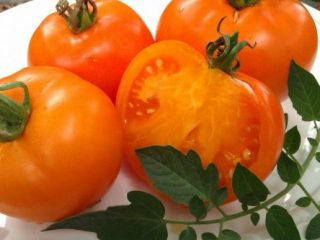Content
If there is a greenhouse on the site, then tomatoes are probably growing there. It is this heat-loving culture that is most often “settled” in artificially created protected conditions. Tomatoes are grown in early spring using seedlings, planting seedlings in a greenhouse at the end of May. During cultivation, seedlings are repeatedly fertilized with various activators growth, but how to feed the tomatoes after planting them in the greenhouse? What substances do plants need in order to take root better and gain sufficient strength for the formation of ovaries and further abundant fruiting?
Let's try to understand this issue and find out what exactly should be used to feed young plants during this difficult, stressful period for them.
Microelements for tomatoes
Soil fertility plays a very important role for growing any crop, including tomatoes. The soil must contain all the necessary microelements for normal growth and development of the crop: potassium, phosphorus, nitrogen, magnesium, calcium and others. Each substance is responsible for normalizing a certain vital function of the plant, for example, respiration, lipid metabolism, photosynthesis.
- Potassium responsible for water balance.It allows the roots to absorb the required amount of moisture and transfer it to the uppermost leaves of the plant. Potassium is also involved in the formation of carbohydrates and makes plants more resistant to low temperatures, drought, and fungus. Potassium plays an important role in the rooting process of plants.
- Phosphorus is a unique microelement that allows roots to absorb the required amount of nutrients from the soil, then participates in the synthesis and transport of these substances. Without phosphorus, other plant feedings are pointless.
- Calcium directly involved in the process of cell division, necessary in the early stages of growing tomatoes.
- Nitrogen allows plant cells to divide rapidly, as a result of which tomatoes grow intensively.
- Magnesium is a component of chlorophyll and is involved in the process of photosynthesis.
- Iron helps plants breathe.
For normal growth and development, all of the listed substances must be combined in the required quantities. An imbalance of substances in the soil leads to impaired plant growth, reduced fruiting, wilting, and death. Often, tomatoes themselves indicate a lack or excess of one or another microelement in the soil. To diagnose the situation, you need to know some symptoms:
- For potassium deficiency Tomato leaves acquire a light, dry edge, similar to a burn. Over time, such edges begin to turn brown and curl upward, and the disease spreads over the entire surface of the leaf plate.
- Phosphorus deficiency manifested by severe darkening of the leaves. They first turn deep green, then their veins and undersides turn purple. Tomato leaves are slightly curled and pressed against the stem.
- About calcium deficiency Two symptoms indicate this at once. These are the dry tips of young leaves and the dark color of old leaves.
- Nitrogen, perhaps the only microelement that can cause harm in case of insufficient and excess amounts. A lack of nitrogen is manifested by slow plant growth and the formation of small leaves and fruits. In this case, the leaves become yellowish and lethargic. Excess nitrogen can lead to significant thickening of the stem, active growth of stepsons and cessation of fruit formation. This process is called “fatification”. Young plants, after planting in soil with undecomposed nitrogen, can completely burn out.
- Magnesium deficiency manifests itself in the form of yellowing of leaves with preservation of the green color of the veins.
- Iron deficiency leads to chlorosis, which is manifested by the appearance of cloudy, gray spots on the apparently healthy green leaf plate of tomatoes. In this case, the veins on the leaf acquire a bright green color.
Thus, the lack of certain microelements can be determined visually. It is typically observed when growing seedlings that have access to a limited amount of soil. After planting in the soil, plants experience stress and need more substances that promote better rooting. These are primarily potassium and phosphorus. In order for the plants to receive all the necessary microelements after planting, it is necessary to first prepare the soil in the greenhouse and feed the tomatoes.
Soil preparation
Soil preparation consists of cleaning and fertilizing. Clear the soil of weed possible by digging and sifting.The larvae of possible pests and fungus can be removed by warming the soil or spilling boiling water or manganese solution on the soil.
The soil in the greenhouse should be dug up in the fall, after removing the remains of the previous vegetation. Also in the fall, you can put rotted or even fresh manure into the soil, with the expectation that it will partially rot before spring and will not contain aggressive nitrogen that is harmful to plants.
In the spring, after processing the greenhouse, it is necessary to loosen the soil again and add fertilizers containing phosphorus and potassium. Such an event will create the most favorable conditions for the growth and rooting of tomato seedlings.
Minerals after landing
Feeding tomatoes after planting in a greenhouse largely depends on the composition and nutritional value of the soil. Some gardeners make the mistake of placing manure under each tomato seedling when planting seedlings. Organic matter contains a large amount of nitrogen, which stimulates the growth of tomatoes at a time when the root system is not adapted. Fresh manure in this case can be completely destructive for plants. As already noted, it should be added to the soil in the fall for re-ripening. At the same time, rotted manure, humus, and compost can be used at the stage of active growth of tomatoes and the formation of ovaries.
During planting in the ground
Immediately after planting in the ground, tomatoes should be fed with potassium sulfate. This drug will help the tomatoes take root and make them more resistant to stress and low temperatures.
A solution of potassium sulfate is used repeatedly to feed tomatoes planted in a greenhouse. During the entire growing season, plants are watered 3-4 times in small portions. This mode of fertilizing shows greater efficiency than the one-time application of the substance in a large volume. You can prepare a solution of potassium sulfate by dissolving 40 grams of the substance in 10 liters of water. This volume should be enough to water 20 plants, 0.5 liters per bush.
During the period from the moment the seedlings are planted in the soil until the end of the growing season, tomatoes should be fed three times. So, between the main feedings, additional spraying and watering with nutrients should be carried out.
During flowering
The first fertilizing from the day the seedlings are planted in the soil must be done after 3 weeks. It is at this time that the active flowering phase of tomatoes begins. Yes, feed tomatoes in a greenhouse During this period, you need substances with a high content of potassium, phosphorus and nitrogen. You can use complex mineral supplements or organic matter. The simultaneous addition of organic and mineral substances also shows high efficiency.
As organic matter, you can use an infusion of rotted manure or bird droppings, humus. If you decide to use manure, then preference should be given to mullein. You can prepare a manure infusion by adding 1 liter of manure to a bucket of water. Tomatoes should be watered with a small amount directly at the root of the plant.
Mineral microelements (nitrogen, potassium and phosphorus) are included in various fertilizers that can be used in accordance with the instructions. Also, these microelements are contained in ash, which can be used to feed tomatoes. In this case, you need to use only the combustion product of natural wood, avoiding the presence of combustion residues of various debris.
Ash for feeding tomatoes is diluted in rain or well water at the rate of 4 liter jars per 100 liters. After thorough mixing, the tomatoes are poured at the root with the resulting ash solution.
Combine minerals and organic substances for first feeding can be done in various ways, for example, by adding nitrophoska to the mullein infusion. You can also prepare a natural fertilizer for tomatoes from improvised means: finely chop green grass, including nettles and weeds, with an ax, then add water in a ratio of 10 liters per 1 kg of grass. Add 2 liters of mullein and a third of a glass of wood ash to the herbal infusion. The resulting mixture must be thoroughly mixed, covered with a lid and left for 6-7 days. After the allotted time, the infusion is diluted with water to a volume of 30 liters and used to water the tomatoes. The average consumption of this fertilizer is 2 liters for each bush.
Formation of ovaries
Second feeding tomatoes carried out during the active formation of ovaries, i.e. approximately 15-20 days after the first feeding or the day the tomatoes were planted in the greenhouse. At this time, it is necessary to use fertilizers with a high nitrogen content.So, for feeding, you can use a solution prepared by adding 30 grams of ammonium nitrate, 80 grams of superphosphate and 25 grams of potassium sulfate to a bucket of water. By watering tomatoes with this mixture, you can improve the formation of ovaries and make the plant stronger, ready for the fruiting phase.
During the formation of ovaries, you can also add organic substances by dissolving mullein in water in a ratio of 1:10.
It is especially important during the period of ovary formation to carry out foliar feeding in the form of spraying. To do this, you can use manganese sulfate dissolved in water in a ratio of 1 g per liter. Boric acid also promotes the formation of ovaries. It is diluted in water at the rate of 0.5 grams per liter. Such solutions are used for spraying tomatoes. Spraying can be done using a sprayer or a regular watering can.
It is worth noting that boric acid during the formation of ovaries is used not only for spraying, but also for watering. So, by adding 10 grams of this substance and a glass of wood ash to a bucket of water, you can get a fertilizer rich in essential microelements. It is used for watering at the rate of 1 liter per bush.
Active fruiting phase
By supporting tomatoes at the stage of active fruiting, you can increase the yield of the crop, improve the taste of tomatoes and prolong the process of fruit formation. You can use the usual mineral and organic substances. Complex mineral fertilizer can be prepared by adding ammonium nitrate, potassium sulfate and superphosphate in an amount of 40 grams of each substance to a bucket of water.
You can also fertilize tomatoes during fruiting with nettle infusion. It contains the required amount of potassium, magnesium, and iron. So, 5 kg of chopped nettle should be filled with 10 liters of water and placed in a container under a press for 2 weeks. This natural fertilizer does not contain nitrogen and can be used in conjunction with the addition of humus or manure infusion.
Thus, to get a good tomato harvest, you need to know how to fertilize the plants at each stage of cultivation. When planting seedlings, preference should be given to minerals that will allow the seedlings to take root as quickly as possible and adapt to the conditions of the greenhouse. Planted plants must be monitored during development, paying attention to signs of deficiencies of any nutrients. In the absence of symptoms of “starvation”, after planting, tomatoes are fertilized three times, depending on the stage of the growing season, otherwise, extraordinary fertilizing can be carried out with the addition of the necessary substance.
Extraordinary feeding
You can feed tomatoes no matter what stage of cultivation they are at. So, for emergency feeding you can use yeast. It is worth noting that many farmers call this well-known product the best fertilizer for tomatoes in a greenhouse.
Yeast can be used to feed tomatoes at various stages of cultivation from sprouting to harvest. As a rule, they are applied in the form of emergency feeding 4-5 times per season. Preparing a yeast solution is not at all difficult. To do this, you need to dissolve 1 kg of product in 5 liters of warm water. Add it to preheated water and leave until fermentation.The resulting concentrate is diluted with warm water (0.5 liters per bucket). Feeding consumption should be approximately 0.5 liters per bush.
It is worth noting that sometimes yeast nutrition is prepared with the addition of sugar, herbal infusion or mullein. You can learn more about feeding tomatoes with yeast by watching the video:
Conclusion
Minerals and organic matter are important assistants to the gardener and must work together. These substances should be used depending on various factors: the general condition of the plants, signs of microelement “starvation,” and soil composition. Fertilized tomatoes will always look healthy and fresh. They will give a good harvest of vegetables with high taste. This will be a thank you for decent care.



















